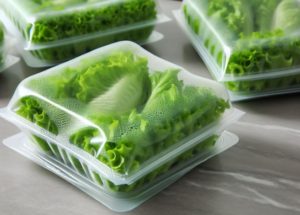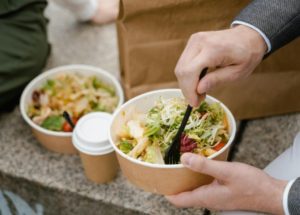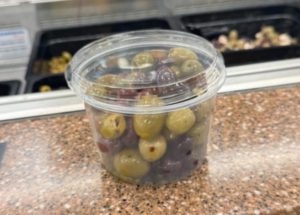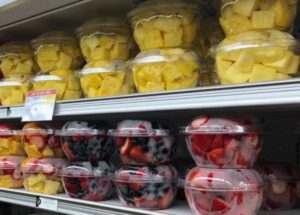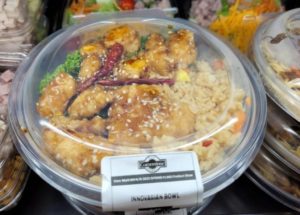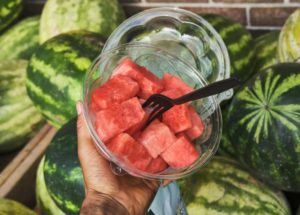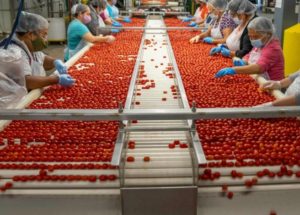Apr 03, 2025
Thin Plastic, Big Problems: How Packaging Thickness Can Affect Your Food and Reputation
The thickness of plastic packaging affects protection, cost, and environmental impact — thicker films offer better barrier and durability, while thinner materials reduce waste and expense. Underspecifying thickness can cause product damage or reduced shelf life, so balance strength with performance. Optimizing thickness minimizes CO₂ footprint during transport by lowering weight. Testing and monitoring thickness […]
Read More +
Mar 31, 2025
The Hidden Challenge in Your Fresh Food Packaging: Why Gases Matter
Packaged produce breathes — it consumes oxygen and emits CO₂, causing bulging when gas transmission rates and temperatures aren’t managed properly. Proper film permeability matched to the produce’s respiration keeps internal gas levels balanced and avoids package swelling. Temperature control and monitoring during storage and transport are essential to maintain freshness and prevent spoilage. Regular […]
Read More +
Mar 27, 2025
Plastic vs. Compostable Food Packaging: Which Is the Right Fit for Your Business?
Plastic and compostable packaging each have pros and cons — plastic offers durability, clarity, and widespread recycling, while compostables appeal to eco-conscious consumers but demand proper composting facilities. Compostable options often cost more and may lack barrier strength unless specially designed. End-of-life systems matter — compostables only work if facilities exist; otherwise, recyclability of plastic […]
Read More +
Mar 25, 2025
8 Food Packaging Problems Facing Grocery Retailers
Packaging problems include damage, leakage, and poor shelf presence, driving increased returns and customer frustration. Retail readiness struggles like mis-sized packs and unclear labeling slow down restocking and complicate inventory. Sustainability inconsistencies, such as unclear recyclability claims, reduce customer trust. Cost pressures emerge from over-packaging and lack of material optimization, affecting profit margins. A single […]
Read More +
Mar 20, 2025
Understanding Sustainability: A Must for Food Industry Professionals
Understanding sustainability guides smarter packaging decisions, considering environmental, social, and economic impacts together. True sustainability goes beyond recyclability, including design for reuse, reduced material, and supply chain ethics. Measuring impact is key, using metrics like carbon footprint, water usage, and waste generation. Collaboration and transparency — across suppliers, brands, and consumers — power effective, lasting […]
Read More +
Mar 17, 2025
Your Guide to Plastic Food Packaging Dimensions and Their Applications
Food packaging dimensions drive fit and function — selecting the right size ensures efficiency in shelf placement, shipping, and product protection. Shallow trays suit grab-and-go meals, while deep containers support layering and volume for prepared foods. Standard dimensions aid automation, reducing changeovers and maintaining consistent performance on packing lines. Custom sizing balances brand identity and […]
Read More +
Mar 13, 2025
Maximize Produce Shelf Life: The Food Packaging Testing Guide
Testing produce packaging ensures durability, seal integrity, and shelf life performance under real-world conditions. Key tests include drop, burst, and vibration resistance, ensuring your packaging survives transit and handling. Barrier assessments (moisture, oxygen, light) verify freshness protection for various food types. Regulatory and migration tests confirm materials are safe for food contact and compliant with […]
Read More +
Mar 10, 2025
Anti-Fog in Packaging: The Clear Solution to Boost Your Hot Food Sales
Anti-fog food packaging technology keeps containers crystal clear, preventing steam clouds and highlighting your product’s appeal. Surface coatings or embedded additives manage condensation, spreading water into transparent layers instead of droplets. Vented designs paired with anti‑fog maintain freshness and visibility, even for hot foods through temperature shifts. Clear presentation boosts sales and reduces food waste, […]
Read More +
Mar 06, 2025
How to Tell If Your Plastic Food Packaging is High-Quality
The quality of plastic food packaging shows up in appearance, strength, and seal integrity — look for clarity, uniformity, and no defects. Material thickness and consistency help avoid breakage, leaks, and performance issues. Strong seals and closures prevent contamination and maintain freshness throughout supply chains. Certification and testing history (e.g. FDA, ISTA drop tests) signal […]
Read More +
Mar 04, 2025
Food Processor’s Guide: Solving Common Plastic Packaging Problems
Plastic packaging issues like leakage, seal failure, and distortion can arise from material choice or process missteps. Mismatch between film and heat-seal parameters causes inconsistent sealing — optimize temperature, pressure, and dwell time. Material stretch or wrinkles during forming can lead to misaligned lids or weak spots — ensure proper film tension and tooling calibration. […]
Read More +


